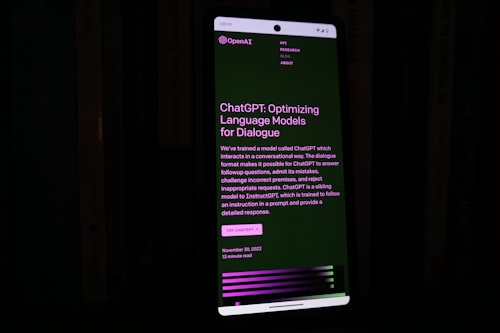ChatGPT and similar AI chatbots have garnered significant attention in recent times, showcasing the remarkable advancements in natural language processing.
heir ability to generate coherent and grammatically correct sentences has left many in awe. However, a closer look reveals that these chatbots operate within strictly defined parameters, relying on large language models (LLMs) trained on extensive datasets rather than possessing true understanding, emotion, or intent.

At their core, AI chatbots like ChatGPT function more akin to machines performing mathematical calculations and statistical analysis. They leverage the power of LLMs, which are programs trained on vast amounts of text data from published works and online content. Through this process, they learn the significance of words within word sequences and develop an understanding of speech patterns and word groupings.
To ensure effective interactions with users, these chatbots are trained on conversations between humans and machines. This training enables them to simulate functional conversations by using the data to determine appropriate responses. Human trainers play a crucial role in refining the chatbot's capabilities, providing further training on appropriate responses and preventing the generation of harmful content.
During the recall process, when answering factual questions, chatbots deploy algorithms to select the most likely response. Implementing this mechanism allows the bots to identify the best options within milliseconds, choosing randomly from the pool of likely responses. Consequently, repetitive inquiries may yield slightly different answers. Moreover, chatbots excel in breaking down complex questions into smaller parts and responding sequentially, leveraging previous answers to compose comprehensive replies.
For instance, when asked to name a US president with the same first name as the male lead actor in the movie "Camelot," the chatbot might initially identify Richard Harris as the actor and then provide Richard Nixon as the answer to the original question. However, despite their remarkable proficiency, chatbots encounter limitations when faced with questions beyond their training. Rather than acknowledging their lack of knowledge, they tend to make educated guesses based on the information they possess, presenting it as factual.
This phenomenon, known as "hallucination," is a result of the bot generating information without recognizing its own limitations or knowledge gaps.
In conclusion, AI chatbots like ChatGPT operate on the foundation of large language models trained on extensive datasets, enabling them to generate fluent and coherent responses. However, it is important to remember that their functioning is rooted in statistical analysis rather than true comprehension. These chatbots have the potential to assist users in various domains but may encounter difficulty when confronted with unfamiliar questions, leading to the creation of speculative responses.

